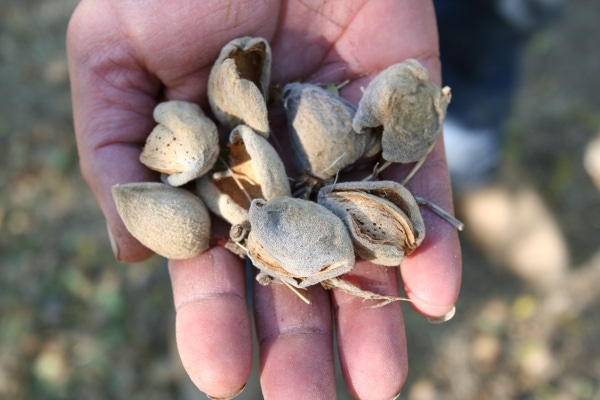
The 2012 California almond crop forecast is a record-breaking 2.10 billion meat pounds, according to the National Agricultural Statistics Service.NASS’ almond objective measurement report estimate released June 29 is 5 percent higher than the agency’s subjective forecast in May, and 3 percent above last year's crop. This year’s forecast is based on 780,000 bearing acres.Production for the Nonpareil variety is forecast at 730 million meat pounds, 7 percent below last year’s deliveries.
June 29, 2012

2012 California almond production is forecast at a record-breaking 2.10 billion meat pounds, according to the National Agricultural Statistics Service (NASS).
NASS’ 2012 California almond objective measurement report estimate released June 29 is 5 percent higher than the agency’s subjective forecast in May, and 3 percent above last year's crop.
This year’s forecast is based on 780,000 bearing acres.
Production for the Nonpareil variety is forecast at 730 million meat pounds, 7 percent below last year’s deliveries. The Nonpareil variety represents 35 percent of California’s total almond production.
The average almond nut set per tree is 7,048, down 4 percent from last year. The Nonpareil average nut set of 6,571 is down 12 percent from last year’s set.
California varieties’ average nut set at 6,845 is up 5 percent from last year.
The average kernel weight for all varieties sampled was 1.48 grams, 1 percent below last year. The Nonpareil average kernel weight was 1.64, up 3 percent from last year. A total of 99.1 percent of all nuts sized were sound.
The 2012 California almond crop began with a warm and dry February which created favorable bloom conditions for almond trees. The 2012 bloom period was shorter than last year, but excellent weather made up for the shorter overlap. Chilling hours were plentiful.
An early March frost resulted in some spotty damage in the southern San Joaquin Valley. An early April hailstorm impacted orchards in Merced County.
Growing weather in the Sacramento Valley has been near ideal. A heavier than normal drop was reported in the San Joaquin Valley.
Across the state, lower limb death was higher than last year. Disease and insect pressure have been minimal.
The NASS survey began May 29 and sampling was completed by June 18. There were 1,746 trees sampled for this year’s survey in 873 orchards.
The objective measurement survey is funded by the Almond Board of California.
You May Also Like



